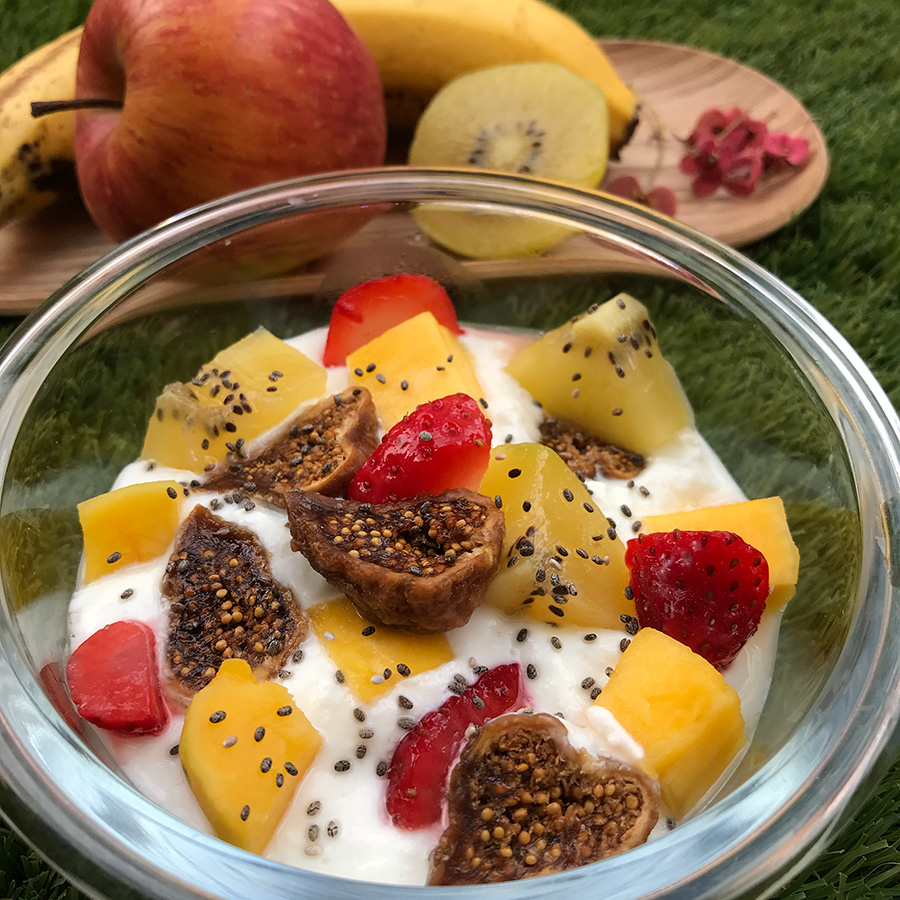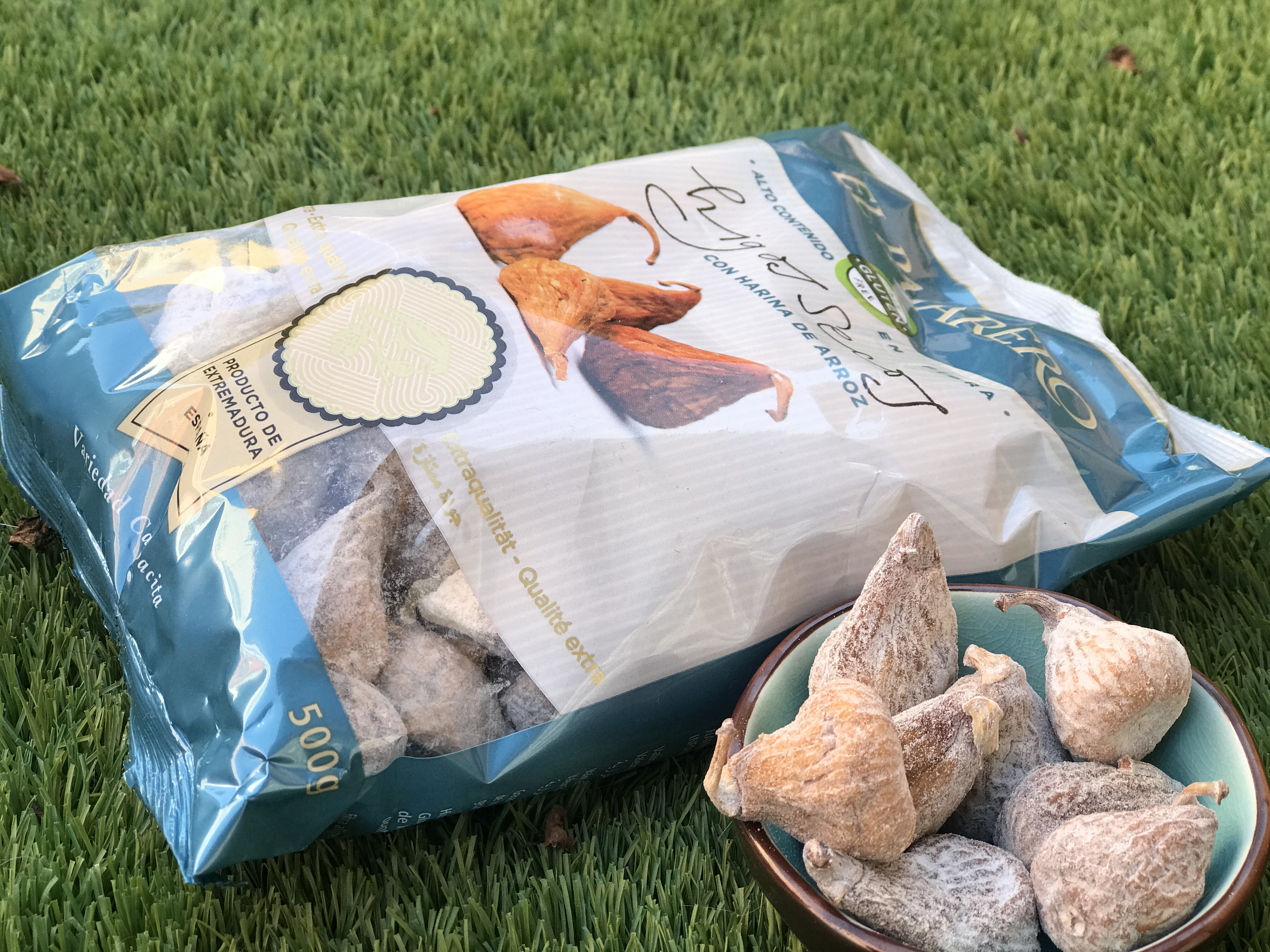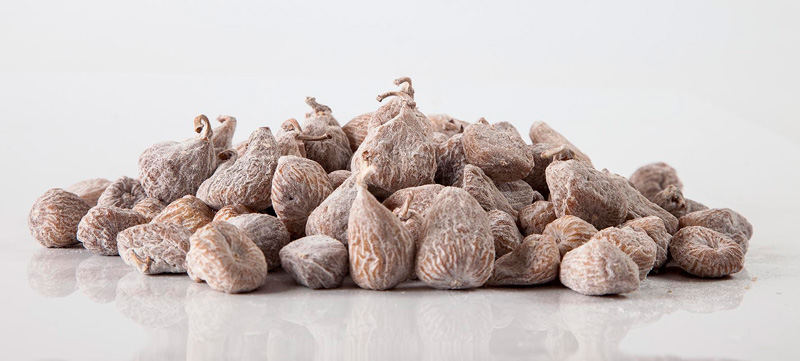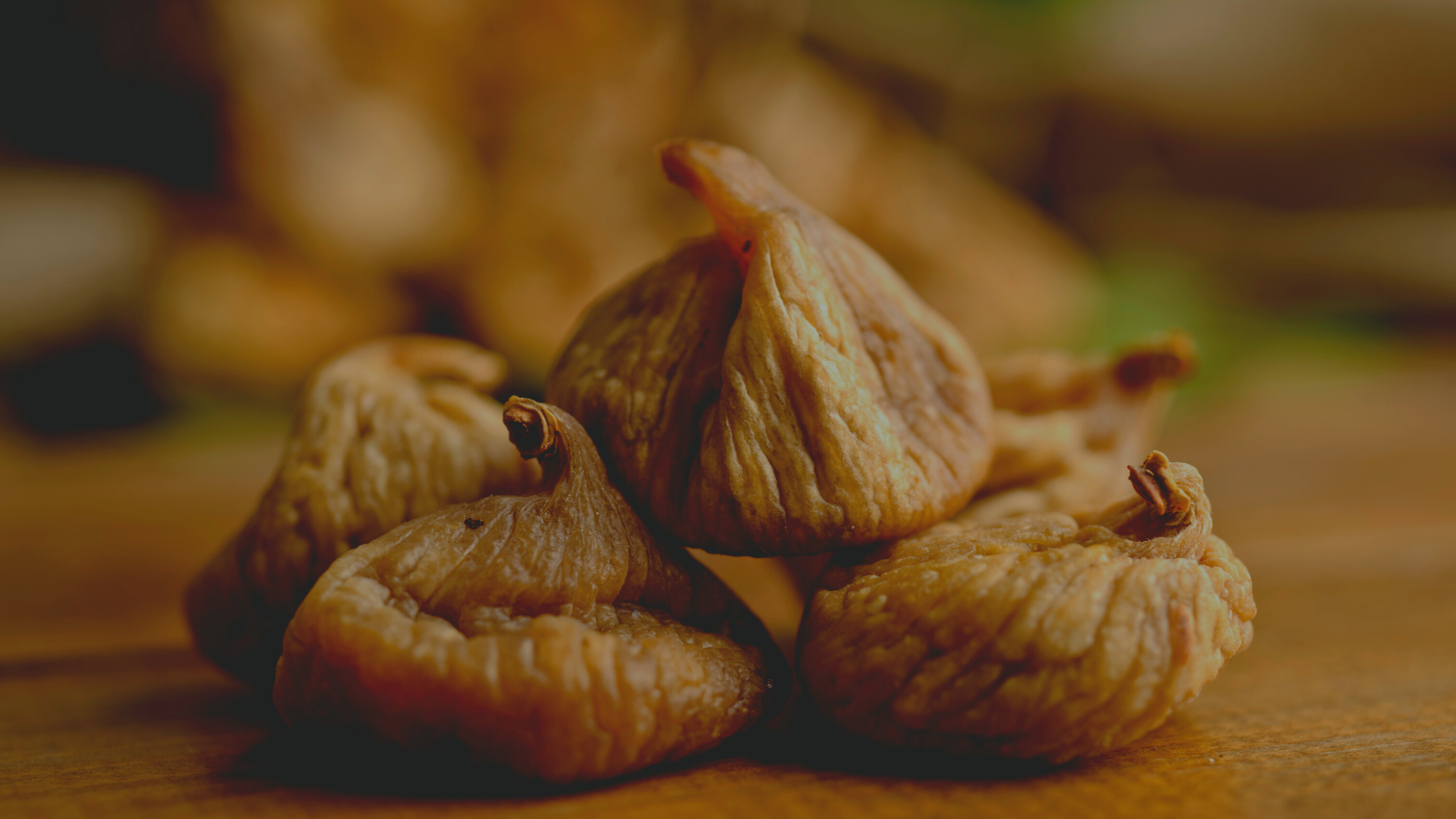
It's summer, the middle of August and we're in "holiday mode". It's quite hot and we feel like eating light, fresh and, above all, quick to prepare, to avoid spending long hours in the kitchen.
Today we want to share with you a fresh, healthy and delicious snack that you can prepare in 5 minutes... (Or less).
Why is this recipe especially for athletes?
This snack is a great option for athletes, as it provides them with carbohydrates, protein and healthy fats.
Whipped cream cheese contains a high protein content, mostly casein, a slow-absorbing protein. Skimmed cheese is the perfect non-fat substitute for cream. It is gluten-free, which also makes it ideal for coeliacs.
It also has no added sugar. The sweetness of our snack has been achieved thanks to the sweetness of our El Pajarero dried figs, another food rich in iron, magnesium and calcium that will give you everything your muscles need.
Another advantage of this recipe is that you don't need a long list of ingredients, you don't have to use heat and you'll have it ready in just a few minutes. So if you're short on time or just looking for something new to try, this recipe will be perfect for you. Without further ado, let's get started!
Ingredients for two servings
- 200g 0% fat whipped cream cheese or the one of your choice
- 6 dried figs "El Pajarero"
- 80g ripe mango
- 1 golden or green kiwi
- 2 large strawberries
- Chia seeds
- Optional: honey, banana and seasonal fruits of your choice.
Preparation
Cut the figs in half. The advantage of our El Pajarero dried figs is that as they are small, you won't need many cuts.
Peel the mango and dice it. Do the same with the kiwi, strawberries and any other fruit you have decided to add.
Once you have the fruits ready, separate the whipped cream cheese into two bowls (100 grams each). Spread the fruit on top of the whipped cheese and here's a tip: if you play with the colours of the fruit, it will be even more appetising ;)
Set aside in the fridge for a couple of minutes.
Before eating, sprinkle with chia seeds. Another option is to add chopped walnuts.
As mentioned above, this recipe is sugar-free. The sweetness will be achieved with our El Pajarero dried figs. And also if the fruits you have added are at the right point of ripeness.
However, if you think it lacks sugar, you can pour a thin trickle of honey on top. It will give it a delicious and natural touch.
This recipe is perfect for summer and as you can see, it is very easy to make, just mix all the ingredients and enjoy!

A few days ago, in the first part of this article, we told you about the importance of potassium intake for your health. Today we bring you the second and final part.
We all know that potassium is important for our health, but do we know how much we should consume every day? This time, we will focus on the recommended intake and list some of the main foods high in potassium, especially fruits :)
In many cases, most people don't think about this mineral until they are diagnosed with an electrolyte imbalance. As we told you in part one, potassium is essential for maintaining fluid balance, transmitting nerve impulses and contracting muscles. It also helps keep blood pressure under control and may reduce the risk of heart disease and stroke. As well as being found in many leafy green vegetables, potassium is present in other healthy foods such as figs, oranges, yoghurt, salmon and avocados. Below is a more detailed explanation of how much potassium we need each day and some tips for getting more potassium in our diet.
How much potassium should we consume each day?
What we eat has a direct impact on our overall health. Eating the right foods helps maintain the right level of potassium, which is essential for healthy cell function. By eating a balanced diet, we can help our bodies stay strong and prevent disease.
The amount of potassium needed depends on age and gender. According to the National Institutes of Health (NIH), part of the US Department of Health and Human Services, the average recommended daily amounts are:
- Children 1 to 3 years old: 2,000 mg.
- Children 4 to 8 years old: 2,300 mg
- Boys 9-13 years: 2,500 mg
- Girls 9-13 years: 2,300 mg
- Adolescents 14-18 years (boys): 3,000 mg
- Adolescents 14-18 years (girls): 2,300 mg
- Adults 19 years and older (men): 3,400 mg
- Adults over 19 (women): 2,600 mg
- Pregnant women: 2,900 mg
- Breast-feeding women: 2.800 mg
It is important for the general population to get their daily dose of potassium. As mentioned at the beginning, potassium is found in many foods. In addition to those mentioned in the first part of this article https, it is also found in green leafy vegetables. Dried fruits such as figs, prunes, apricots, sultanas, walnuts. Also Bananas, oranges. Meat, poultry and fish. Milk, yoghurt. Lentils, soybeans, sweet potatoes, and many others.
Is the banana the fruit that provides us with the most potassium?
For generations, in many cities around the world, the banana has been associated with the fruit that contains the most potassium. Surely if you remember your childhood, the words of your parents or grandparents will resonate when they insisted that you should eat at least one a day. In reality, there are fruits that provide even higher amounts.
Here is a list of the fruits that, according to the Spanish Nutrition Foundation (FEN), have the highest amount of potassium:
Coconut
It is the fruit richest in potassium according to the FEN (Spanish Nutrition Foundation), providing 405g in 100 grams, although it also has the highest amount of saturated fatty acids and its consumption is recommended in small portions. Another advantage of coconut is that it contains selenium and iron.
Avocado
Avocado is a very nutritious fruit that provides a lot of nutrients. A medium avocado contains 400 mg of potassium per 100 grams, which puts it in second place. It also helps us to maintain heart health and provides us with vitamin E.
Custard apple
Third place goes to a fruit that provides 382 mg of potassium and represents 13% of our recommended intake. Compared to other fruits, custard apple has a high amount of carbohydrates (20%) and is a source of vitamin C.
Banana
As you can see, it is not in the first place as it provides us with 350 mg of potassium. Bananas are rich sources of this essential nutrient. It also includes carbohydrates (20%). This fruit also provides 30% of the daily requirement of vitamin B6.
Figs
El Pajarero dried figs provide 200mg of potassium per 100 grams of fruit. In addition to calcium, iron and magnesium. It has all the essential amino acids and a large amount of fibre. It has small amounts of vitamin B6 and thiamine.
There are many fruits that also contain high doses of potassium such as grapefruit, melons, apricots, kiwis, peaches, among others.
Potassium is an important mineral that our body needs to function properly. There are many foods high in potassium that can help us achieve this goal. Next time you go shopping, be sure to include some of these potassium-rich foods on your shopping list.
By the way, what is your favourite potassium-rich food?
Ours, dried figs :)

If you ask anyone about the minerals our bodies need, they will probably mention calcium, sodium and iron. But what about potassium? This essential mineral is another must-have that our bodies need to function properly. In this blog post, we'll take a closer look at it and discover some of its benefits.
Potassium plays essential roles in the stability of the body's heart rhythm, nervous system and muscles.
The good news is that it is found in many foods we eat every day. By consuming the right amount, your body will have all the potassium it needs to stay healthy.
Main functions of potassium
Potassium plays multiple roles in the body. Without potassium, our body would not be able to function as it should.
- Helps regulate blood pressure
- Stimulates nerve impulses
- It is involved in the production of proteins
- Helps eliminate organic waste
- Helps process carbohydrates
- Has a diuretic effect
- Supports muscle function
- Helps the permeability of membranes
- Contributes to nerve transmission
- Aids in the transport of oxygen to the brain
Some of its benefits
Normal bodily functions depend on the tight regulation of potassium concentrations inside and outside cells. This has many benefits, some of them are:
- A diet rich in potassium and calcium reduces blood pressure. High blood pressure can have many detrimental effects on the heart, blood vessels and kidneys.
- It helps regulate the heartbeat. Potassium is essential for this function because it helps maintain electrical activity within cells, especially muscle cells. In fact, two-thirds of the body's total potassium supply is stored in the muscles.
- Potassium aids muscle contraction by causing muscles to contract more forcefully than they would at rest when they are ready for action - think of muscles contracting during exercise, but with much greater force than they would under normal circumstances.
- As potassium is a mineral that behaves as an electrolyte, if you play sport or are exposed to rigorous exercise, it is normal to lose fluids and electrolytes after prolonged exertion. Therefore, in addition to consuming potassium, it is essential to drink water to recover and prevent muscle cramps.
- Potassium is important for maintaining healthy bones. It aids protein synthesis and helps maintain a healthy pH balance in the body. Potassium also helps build the minerals that make up bones.
- Potassium is an essential nutrient that helps fight fatigue. Low levels of potassium can lead to a feeling of tiredness and lethargy, so it is important to make sure you get enough of this essential nutrient each day.
What foods contain the most potassium?
Some foods rich in potassium include:
- Broccoli, spinach, cabbage and other green leafy vegetables
- Dried figs, nuts and others dried fruit
- Grapes, fresh figs and blackberries
- Carrots and potatoes
- Bananas and plantains
- Whole grains
- Lentils and pulses
- Oranges and other citrus fruits
- Milk and its derivatives
- Red meat and poultry
- Fish such as salmon, cod and sardines. etc.
In the second part of this article we will tell you how much potassium you should consume per day, which are the main foods that contain the most and how much potassium they provide. In the meantime, we will tell you more on our social networks:
See you soon!

Today we would like to talk about the benefits our fig bread provides, what ingredients it contains and why it's good for your health.
Dried figs, even if they can be eaten alone, they can also be enjoyed as a base for other foods, as it's the case in "Fig bread El Pajarero"
which, besides containing dried figs also contains nuts, almonds, sultana raisins, cinnamon and anise grains. It's considered a great option for those who are looking for a healthy, tasty and natural snack.
All these ingredients make it an energetic and toning food that contains many health benefits, specially, it can help improve digestive health and issues with constipation.
With its compact dough and its delicious flavor, fig bread is the perfect snack for anyone who is looking for a gluten free, vegan or vegetarian option because even though it's called "fig bread" it doesn't actually contain any wheat.
10 Benefits that the fig bread El Pajarero provides
For this occasion, and so as not to make it too long, we'll only be talking about the ten main benefits of fig bread with dried fruits, but there are many more, no doubt about it. In another article we'll go into more details about it.
1. It gives you energy and vitality, it's perfect to start the day or to give you a burst of energy between meals.
2. Fig bread is rich in fiber, which makes it an excellent solution for constipation issues.
3. Eating it before a meal can help control hunger and cravings during the main course.
4. If you are an athlete, exercise often or require a lot of energy, its calories make it an ideal snack.
5. Fig bread contains vitamins A, B1, B2, B6, C, E, and vitamin K. It is also rich in potassium, iron and calcium.
6. It does not contain gluten or lactose, so it can be consumed by people with celiac disease or intolerance without any risk.
7. Fig bread is a food with beneficial properties for intestinal traffic and health in general, so its regular consumption can be very positive.
8. It provides energy, minerals and fiber, which in turn helps cardiovascular function.
9. If you have iron deficiency, it can be a good natural remedy.
10. Dried figs provide an important amount of antioxidants that support the immune system.
Fig bread with nuts is a perfect snack for any time of day or night. Besides the benefits it offers for our health it's a good option for those who are looking for alternatives that come from healthy ingredients. Another important point is that they contain a very high nutritional value that doesn't get lost, since it's been proven dried figs can be preserved for long periods of time.
Nonetheless, if you've got any health issues, it's important that you check in with your doctor if this is a favorable food for you.
Let us know if you've already tried it! ;)

Magnesium is an essential micromineral that plays a crucial part in the basic fundamental structural function in human beings. Since it’s present in bones, its balance becomes basic for an adequate function of our organism.
Furthermore, it also regulates our system, we can find magnesium’s implication in many reactions of energy acquisition inside our cells. This micromineral also contributes to the normal functioning of muscle tissue.
In which part of our bodies is magnesium present?
Magnesium is present in our human bodies, basically in muscle and bone tissue. At the same time, although in small quantities, it is present in our bloodstream and red blood cells. That's why it’s important to assure proper levels of magnesium in our diets.
What food should we consume regularly to get adequate levels of magnesium?
To obtain a good level of magnesium, we can find this micromineral in food such as dried figs, avocados, nuts such as almonds, cashews or pistachios, some seeds such as pumpkin, flax or sesame, unsweetened cocoa powder, white corn, snails, oily fish, herbs and spices, fruits such as grapefruit or lemon, dark bitter chocolate and berries, to cite the most obvious examples.
It should be noted that its multifunctionality means that it comes to play a more or less prominent role in more than 300 reactions that occur in our body, although we may not be aware of them. Just to name a few examples, you will find magnesium in:
- Muscle contraction
- Protein synthesis
- Maintenance of healthy teeth, heart and bones
- Supporting protein formation
- Oxygen transport
- Energy metabolism
- Immune functions
- The intervention of the nervous contraction and in the nervous transmission.
It is therefore of vital importance to ingest the foods mentioned previously. Although in most cases, those who are most concerned about maintaining the correct levels of magnesium are athletes, especially runners,we should all be aware of the consumption of food with magnesium.
What are the consequences of magnesium deficiency?
A large enough magnesium deficiency can cause structural damage to muscle cells, so we can get tired earlier and suffer more fatigue, we can encounter metabolic problems when normal energy is being produced or even, without this micromineral, we could lose the electrolyte balance in our body.
Other effects of a lack of magnesium in our body can be irritability, convulsions, decreased appetite or weakened muscles.
On the other hand, it is important to know that the use of magnesium is particularly useful for people who do sports, who have a high rate of sweating or who train under intense hot weather conditions. Our body eliminates excess magnesium by itself.
Consuming natural foods such as dried figs (you can find them almost all year round), some nuts, some citrus fruits, avocados (and others mentioned above) can help you get the magnesium levels your body needs. Consult your doctor to know your needs and maintain them properly.

At Higos El Pajarero we want to share with you one of the secrets of a healthy diet that allows you to be in optimal shape: the consumption of dried figs. These little delicacies are full of properties, vitamins, minerals and other substances with which you will get a perfect health, so get ready to know them a little more.
Properties
The first thing you need to know is the amount of properties that dried figs El Pajarero have. For starters, they are rich in some of the most important minerals for your body. Without going any further, these fruits, when dried, contain large amounts of iron, although this is not their only advantage. On the contrary, calcium and magnesium are also very abundant in figs presented in this way, so they are most suitable to help alleviate many deficiencies in the body.
However, this food also contains a good amount of vitamins that you should not lose sight of. For example, various types of vitamin B are found in high concentrations in this dried fruit, which is ideal for your body health.
Healthy eating
Taking into account these characteristics, it is easy to guess that dried figs are ideal to be able to eliminate certain pathologies. For example, cases of anemia have in this fruit a powerful all-natural medicine due to the presence of iron and vitamin B.
Digestive disorders, especially those with symptoms such as constipation and even heartburn, can also find a solution in the consumption of figs El Pajarero. The reason is none other than the abundant amount of fiber that a regular consumption of this fruit provides, a completely necessary element to enjoy life in a healthy way.

Did you know that dried figs have a lot of fiber, calcium, and magnesium? That’s why it's good to eat them everyday. Not only are they a tasty snack, but they offer a good amount of vitamins and minerals.
Fresh figs season is about to end, but fortunately dried figs can be found pretty much all year round in a lot of grocery stores. In fact, our own figs, Drie
d Figs El Pajarero, are sold at most grocery stores. :-)
Natural and healthy snack
Dried figs El Pajarero, are a delicious and healthy snack that anyone and everyone can enjoy anywhere. They are rich in potassium, which helps prevent muscle cramping and low arterial pressure. So in case you do any sports, these will come in handy.
Furthermore, dry figs have the same amount of fiber as a serving of oats. So, next time you’re looking for a healthy snack to carry around dried figs won’t disappoint you!
Here you have 5 ideas to include them in your diet
1) Add dried figs to your oats, to get an extra boost of nutrients.
2) Use dried figs instead of raisins for your favorite cookie recipe
3) Mix dried figs with nuts and seeds to obtain a healthy snack
4) Add chopped dried figs to your salads in order to get a sweet flavor and crunchy texture
5) To add some sweetness to your yogurt, add some minced dried figs
How do you eat your dried figs? Do you combine them with other ingredients?
We hope you enjoyed this post about how to include dried figs in your diet. If you wish to get more information about dried figs and how it affects your health and nutrition here you will find more information. And if what you’re looking for are recipes that include dried figs, you can find plenty here.
If there's any other topic related to health and nutrition that you’re interested in, tell us about it: we’ll be delighted to keep uploading content!

A fig is a bulbous, soft and sweet fruit that comes from different kinds of Ficus trees. Figs are native to East Asia and the Mediterranean, but they can grow in dry or mildly humid climates, hence why places like Extremadura cultivate the best figs of all of Spain.
Dried figs contain hundreds of tiny edible seeds that are greatly appreciated by their texture and the nutrients they add to the fruit. They are consumed all around the world either fresh or dried and can be enjoyed as a tasty and healthy snack or be added to salty or sweet recipes
Five properties that dried figs offer
1) Reducing high cholesterol levels: A study carried out by investigators from the University of Rutgers discovered that dried figs are a great source of phenol and organic fatty acids Omega-3 and Omega-6, which have been proven to lower “bad” cholesterol LDL and the risk of heart disease
2) It contains more dietetic fiber than any other fruit: Figs provide 20% of your daily dose of fiber, which is more than any other fresh or dried fruit. Figs are particularly rich in soluble fiber like pecticine, which has been proven to be efficient in lowering cholesterol. A study published by The American Journal of Clinical Nutrition found out that consuming soluble fiber often, especially pecticine, can help reduce the risk of heart disease.
3) Include dried figs in your 5 a day: Two dried figs count as a fruit serving in your 5 a day, the program that encourages people to have at least 5 pieces of fruit and vegetables everyday. The 5 a day program.
4) Powerful antioxidants: Dried figs are rich in antioxidants, which protect our cells caused by free radicals. A study published recently in Journal of the American College of Nutrition found out that the antioxidant properties in figs canceled out negative oxidizing stress in blood flow caused by corn syrup and the fructose found in sodas.
5) More benefits for your health: Dried figs are rich in potassium, calcium and magnesium which can help control blood pressure, encourage bone development and control sugar levels in your blood. Figs are also a good source of probiotics, which stimulate useful bacteria that live in our intestines and help our digestive system.
How to eat them?
Dried figs can be enjoyed as a delicious snack, since it provides many health benefits as stated before. The natural sweetness and unique texture also makes them into a great addition to sweet or savory meals. For an exceptional delicacy, try adding dried figs to goat’s cheese and caramelized onions. In this blog, you will find many recipes.
They can also be baked into breads, bread rolls and cookies, or minced in rice plates with meat.

Dried figs bring much more than six benefits. Here we list and explain some of them.
- Heart health
- Alkaline formation
- Healthy hair
- Constipation
- Hypertension and Blood Pressure
- Rich in magnesium
Heart health
Dried figs are very low in sodium, but they have high levels of potassium and magnesium. These nutrients work in lowering arterial pressure and in the meantime, the dietetic fiber aids in lowering cholesterol. Antioxidants in figs help prevent the accumulation of plaque on arteries and veins.
Alcaline formation
One of the main benefits of eating dried figs is that they help provide a good alkaline environment for your body, which is important to prevent acidity and inflammation. Some nuts or other dried fruits are processed and actually promote inflammation, but dried figs are an exception to that. An alkaline body can help raise your energy levels and general health.
Healthy hair
Unhealthy hair usually happens when minerals and vitamins in your body are limited. Consuming 4 to 5 drieds figs a day is one of the best ways to achieve follicle health, providing them with the minerals and vitamins they need.
Dried figs help with constipation
Eating 2 to 3 dried figs daily after every meal, not only helps bring your vowel system to a normal functioning, but also helps with gastritis. Eating them on an empty stomach helps the body get rid of any worms and cleans the veins in all of your body.
Hypertension and Arterial Pressure
The high contents in potassium and low contents on sodium of dried figs is a perfect combination to help fight against hypertension and helps keep blood pressure in check. It also contains some elements that can aid in soothing your nerves.
A great source of magnesium
Dried figs are full of magnesium, which is a trace element necessary to keep many enzymatic reactions essential for energy production and a strong immune system.

Dried figs are one of those foods that hide more secrets behind their simple appearance and their sweet flavor. They are full of nutrients and some properties capable of improving the health of anyone.
This fruit is an essential element if you want to enjoy a healthy diet in every sense of the word.
Nutritional values of dried figs
Here is where the real secret of figs can be found. The sweet and tasty substances that can be found in these fruits, are excellent to balance your diet and make it a lot healthier. For starters, the high concentration of fiber in this food is very high, it’s hard to find any other fruit that offers so much fiber in such a direct way. Selenium is one of the most present minerals in a fig.
Flavonoids are elements capable of protecting the organism from many illnesses, they can be found very concentrated in this little fruit capable of making them anyone’s favorite. Nonetheless, very few know that figs are one of the fruit that contain the most calcium, another reason that just by itself makes its consumption recommendable.

Beneficial properties for your health
Fiber, calcium, selenium and many other elements are necessary to have a healthy diet, and the protagonists of these elements are figs. Now, the presence of these substances offers countless healthy qualities that must be taken into account. In these we can mention:
1) It’s excellent to have a great energy level due to its high carb count and how easy it is to assimilate.
2) They are practically fat-free, which makes them a perfect food to keep body weight in check.
3) Its consumption favors elimination of toxins generated by other food and it also prevents some kinds of cancer thanks to its high antioxidant concentration found in its pulp.
4) Lastly, its calcium content is excellent to strengthen bones in the body, scaring away degenerative illnesses like artrosis.
In conclusion, consuming dried figs is a gift, not only for your health but for your palate, and so they should be a part of everyone’s diet.





